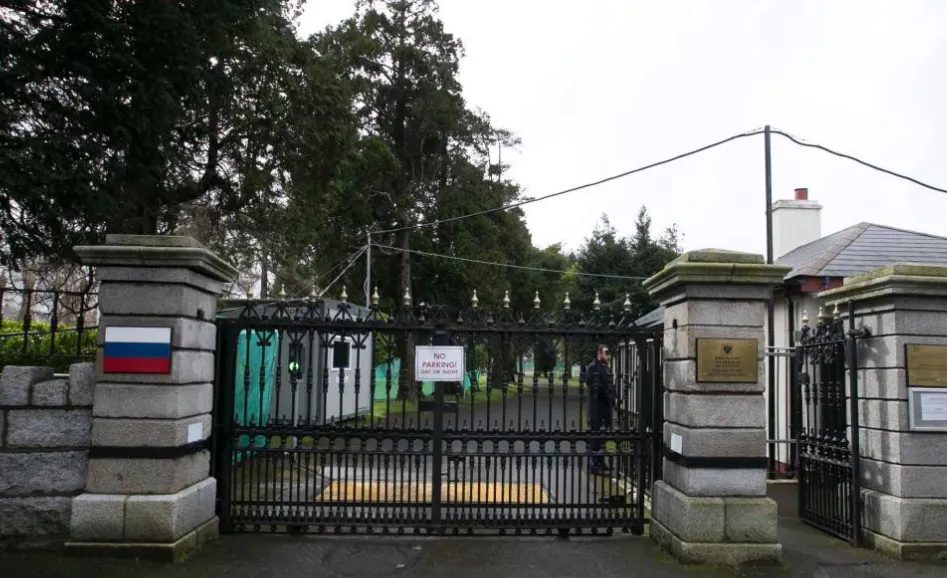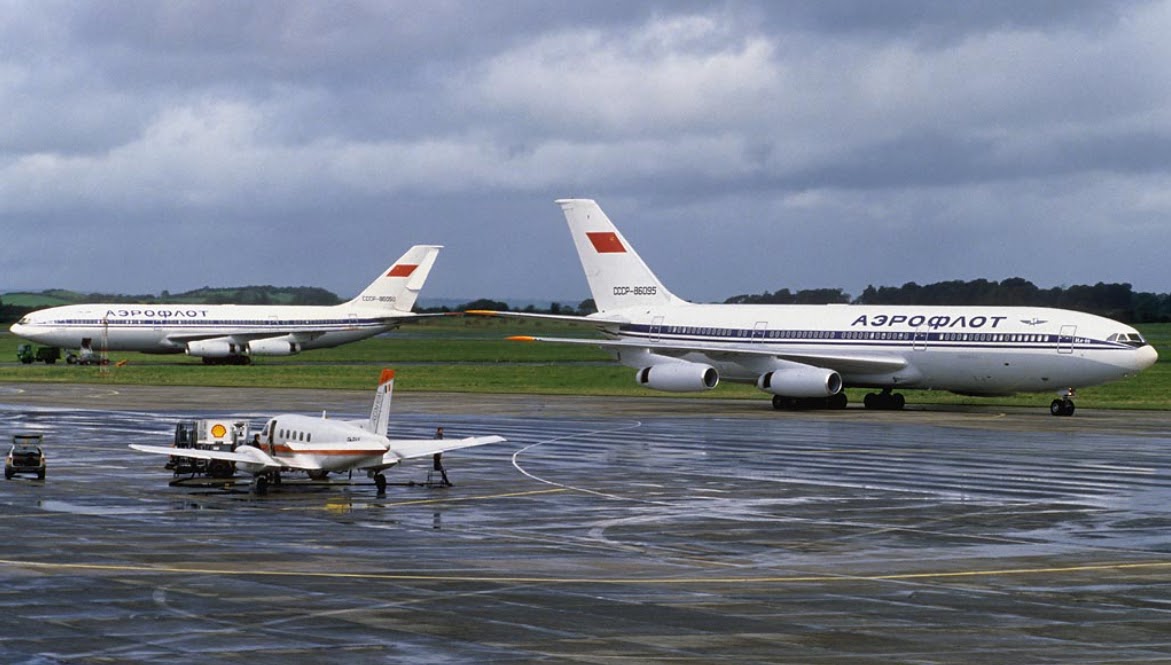5
minute read
The Russian Embassy in Dublin is awash with diplomatic intrigue and simmering geopolitical tensions, a situation echoing the Cold War dynamics.
Ireland isn’t usually considered a nest of spies, yet the lush, rugged edges of the Emerald Isle are exactly where a KGB ring spied on US submarines during the Cold War and - even more disconcerting - Moscow's presence is still felt today in Dublin and Washington. The island is the European HQ for American tech giants Apple, Google, and Microsoft, and the US military uses Shannon airport as a refueling hub.
The Dublin-Mosow relationship has been jittery since 2018 when Ireland blocked an extension to Russia’s embassy fearing it would become a signals intelligence base (Russia denies any such plan). Stories later emerged about Russian bombers invading Irish air space and agents inspecting undersea fiber optic cables.
Ireland expelled four Russian diplomats in 2022 - including one said to be a GRU military spy - and two years later froze applications for Russian diplomatic visas, worried the Kremlin was cultivating relationships with dissident Republicans and using Ireland as a European spy hub.
Moscow’s intrusions are a chilling reminder of the Cold War era when Ireland was swept up in the chaos following the 1972 Bloody Sunday shootings north of its border - an event that proved to be a magnet for Soviet spies and set alarm bells ringing at the CIA, MI6, and Ireland’s J2 military intelligence unit.

Operation Splash
In late 1972, the KGB organized Operation Splash - a weapons dead drop for the Official IRA, a paramilitary group with Marxist leanings, according to the widely respected The Sword And The Shield, The Mitrokhin Archive and The Secret History Of The KGB.
The Reduktor, a Soviet ship that could pass for a fishing trawler, parked 50 miles off of Northern Ireland’s coast to unload. In all, the crew dropped 70 automatic rifles, two machine guns, 10 Walther pistols and 41,600 cartridges concealed in waterproof wrappings. The arms drifted down in a net, eventually settling on a sandbank 130 feet below water.
Yuri Andropov, then head of the KGB, didn’t want the arms traced back to Moscow so none were made in the Soviet Union. KGB ‘technical experts’ ensured West German oil lubricated the Walther pistols and the packaging was supplied by agents worldwide. The KGB even planted a foreign-made buoy in the water to mark where the guns were waiting.
Several hours after the Soviet departure, a fishing boat loitered by the sandbank and hauled up the weapons. It was the first Soviet arms drop for the Official IRA, but it wouldn’t be the last.

The embassy set-up
Paddy Donegan, then Ireland’s foreign minister, was determined to stop the Soviet Union from establishing its first Embassy in Ireland in 1973. Negotiations stalled over security concerns. The way Donegan saw it, if the USSR sent 22 diplomats to Dublin they’d come with 22 spouses - and 30 of the lot would-be spies.
Andrei Gromyko - known as ‘Mr Nyet’ for refusing to bend to Western diplomats - was Donegan’s counterpart in Moscow. He was also the former Soviet ambassador to the US, and knew how to play hardball.
The David-and-Goliath negotiation ended when Ireland agreed to send a six-person team to Moscow. The Soviet Union settled for 17 staff in Dublin. The deal was finalized at the UN headquarters in New York, laying the foundation for the KGB’s new base in Western Europe.

Moscow’s opening move
Moscow appointed Anatoli Kaplin as its first Irish ambassador. Guennadi Saline was tapped to be First Secretary and press attaché, while Viktor Lipassov moved to Dublin as Second Secretary with his wife, Irina. Russia was assembling its chess pieces.
The Soviet delegation lived in comfortable quarters on Orwell Road, reportedly spending $720,000 for a complex spread across five acres. Within two years, the Soviets filed a planning application to demolish the embassy and erect a modern building with 18 flats, a cinema, and a library. The application sparked concern that Moscow was expanding its foothold in Ireland and Europe, Michael Quinn writes in Irish-Soviet Diplomatic and Friendship Relations, 1917-1991.
Ireland’s J2 military intelligence already had their hands full monitoring the comings and goings on Orwell Road. The CIA was also paying close attention.
As for the KGB, they found Ireland’s gossipy pubs ideal for eavesdropping and gathering intel about IRA plots, British troop movements, NATO forces, and US submarines. Around 90 KGB agents had been turfed out of Britain in 1971. Convivial Ireland was proving much easier to penetrate.



.jpg)

